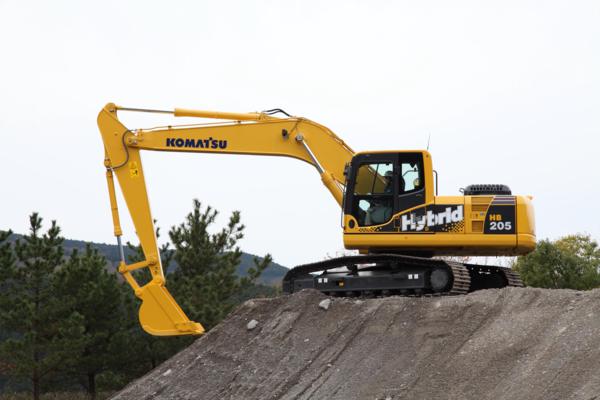EBCD (European Bureau for Conservation and Development) Event on De-carbonising Transport – CECE (Committee for European Construction Equipment) participate at the European Parliament.
The EU objective is an overall reduction of CO2 emissions of 80-95% by the year 2050, with respect to the 1990 level. Research on ways of how to reduce oil consumption and increase savings have started and are therefore increasing rapidly in order to ensure the security of energy supply. Some industry sectors, such as the Construction Equipment Industry are already providing solutions to reduce their dependence and increase the energy-efficiency of the sector. However, a clever and holistic approach is needed.

Last week, CECE (Committee for European Construction Equipment) participated in an event at the European Parliament, the aim was to debate on the compatibility of EU targets for CO2 emissions and existing industry initiatives in the transport sector, with a special focus on alternative fuels and energy efficiency approaches in the transport sector. The EBCD event was Co-Chaired by MEPs Peter van Dalen and Dieter-Lebrecht Koch at the European Parliament.
As a conclusion of the event, MEP Koch asked CECE whether the EU should regulate the Construction Equipment sector on CO2 emissions or if they should refrain and let the industry do it themselves?
David Bell, Chairman of the CECE High level CO2 group said: “Clearly, our industry is already heavily pushed by customers to limit fuel consumption, which is among the most significant input costs. So I strongly recommend the EU to let us work on it without imposing regulations.”
Mr Bell continued, “The European construction equipment industry is committed to CO2 reduction. It has a proven track record of increased product efficiency and consequent reduction in fuel consumption. The European mobile machinery industry is fragmented, being made up of thousands of machine types working in a wide sector of diversified applications. Many machine types are produced in relatively low volumes and any approach to CO2 reduction has to take this into account. The Industry strongly recommends a “market driven” approach as this will ensure innovative solutions that optimise the overall process of performance. Any programme for CO2 reduction has to
include all the elements of operation – the type of equipment selected, the operation of that equipment, the efficiency of the equipment and alternative fuel sources – if we are to optimise and maximise the impact on CO2 reduction.”
Individual manufacturers’ views are fed into CECE through organisations in each country the CEA (Construction Equipment Association) represents the UK.
Malcolm Kent, Senior Technical Consultant to the CEA, said “The CEA is very much in favour of the voluntary approach to reducing CO2 emissions. Due to the complex nature of the construction, civil engineering, and quarrying industries, and the wide variety of machinery that is developed to support those industries, it is highly likely that if legislators attempt to regulate CO2 emissions from machinery the end result will not be what they hoped for, but in the meantime it would have generated a great deal of effort and cost. CO2 emission means, basically, fuel consumption, so competitive pressure to drive this down is the best way to achieve real progress. Also, efficient utilisation of machinery is vital in order to reduce the overall emissions, so regulations about machine design would be of little value on their own. An overall approach is needed, covering machine efficiency and operation efficiency, as well as the possibilities for using renewable fuels.”
Source: CECE and CEA News Room
Latest Events News
- Top International Construction Machinery Brands at SAMOTER 2026
- LGMG Machinery UK to make its Executive Hire Show debut
- PlantWorx begins a new chapter with Nineteen Group
- 19th Executive Hire Show 2026 officially sold out
- Messe München and dmg events bring bauma to Saudi Arabia for the first time in 2027
 Constructionshows
Constructionshows